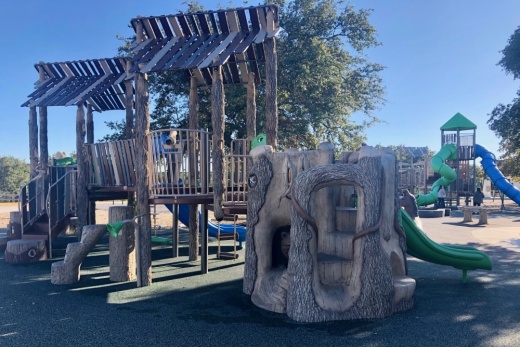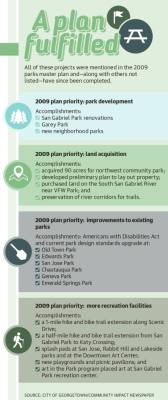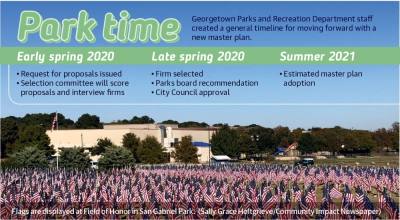However, when it comes to long term planning the city is looking to grow and improve its parks, recreation and open spaces through the development of a new master plan.
The current master plan was adopted in 2009 and was the basis for the November 2008 parks bond package. It focused on a 10-year planning horizon with high-, medium- and low-priority projects mapped out, Parks and Recreation Director Kimberly Garrett said.
Most of those projects are now complete, Garrett said, adding that in addition, the city has seen tremendous growth, with the population increasing by about 60% since 2008—there were about 47,500 residents then—compared to the current number of about 74,000 residents.
“We’ve not only had a lot of new people move into the community, we’ve had a changing demographic,” she said. “People coming from other areas of the country that have experience with other recreational facilities that we might not have may have ideas for how to bring those to Georgetown.”
During the city’s 2030 comprehensive plan process, maintaining and improving parks and recreation facilities in Georgetown was a top theme in public input, Garrett said, adding staff would like to do a deeper dive into what exactly that means for residents.
Finally, a current master plan is necessary to receive grants from the Texas Parks and Wildlife Department, Garrett said, adding the city has received several million dollars in state funds previously.
“This plan was funded in the FY 2019-20 budget, so we’re just trying to kick off the process now,” Garrett said to council members during an informational presentation Feb. 11.
The new master plan process will assess the current parks and recreation system and allow residents to voice desires and concerns through a public engagement process of surveys, public meetings and workshops, according to Garrett. Based on that resident input and a needs analysis, a set of priorities and recommendations, including cost estimates, will be developed to help guide staff and elected officials over the next 10 years.







